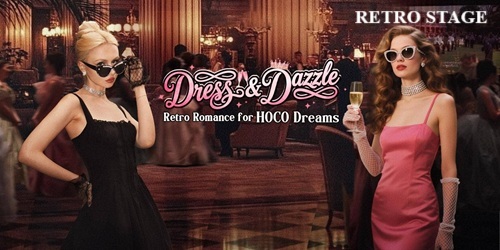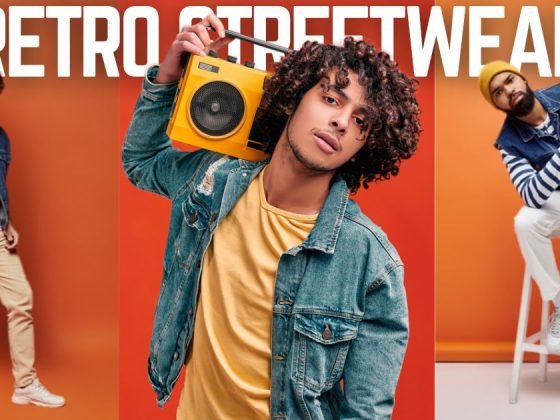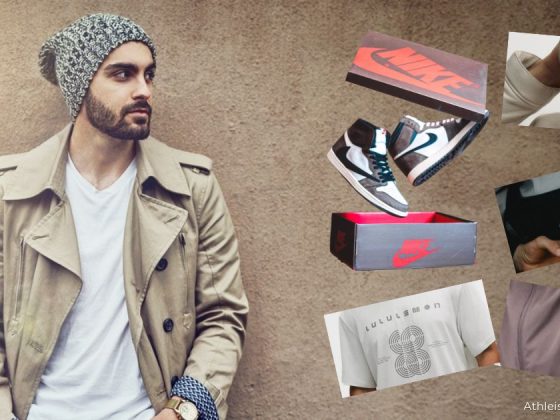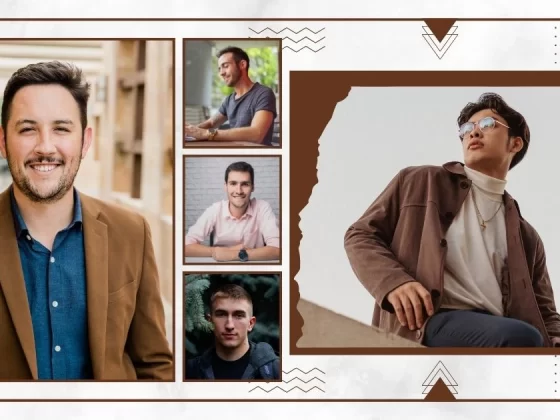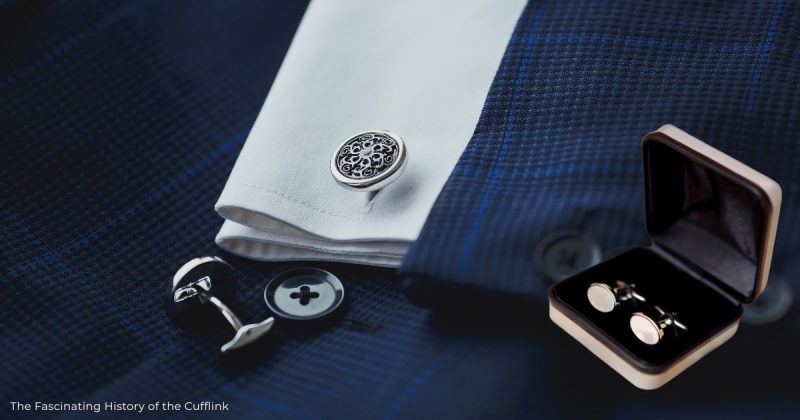
Imagine the splendor of a royal court in the 17th century. Candles glow against gilt-framed mirrors, velvet and brocade sweep across marble floors, and King Charles II fastens a gleaming pair of cufflinks before greeting his court. To the onlooker, they might appear like mere fasteners, but in truth, they were markers of status, wealth, and sophistication.
Though shirts had existed for thousands of years—simple tunics worn next to the skin to protect both man and outer garment—the cufflink represented something new. It was fashion elevated from the practical to the symbolic. No longer just ribbons tied at the wrists, cuffs now held the promise of artistry, wealth, and identity. Charles II even had cufflinks made to commemorate special occasions, setting the trend for aristocrats across Europe.
From this moment, a small accessory began its centuries-long journey into men’s wardrobes, destined to become a defining touch of elegance.
From Tunics to Trinkets: Early Shirt Evolution
Long before cufflinks, men’s shirts were humble, functional garments. Ancient tunics dating back to around 5000 BC were plain, washable, and protective. But as the Middle Ages dawned, fashion became an avenue for display. Collars sprouted ruffs, cuffs blossomed with lace, and embroidery adorned every visible surface.
The ribbons and ties securing those cuffs weren’t just practical—they were decorative, bright with color and flair. These became the forerunners of both the necktie and the cufflink. In grand courts, ruffled cuffs dangled dramatically from sleeves, a visual cue of refinement. By the late 17th century, ornamentation demanded something sturdier and more elegant than string. Buttons connected by chains soon filled the role—what we now recognize as the earliest cufflinks.
The Gentleman’s Essential: 18th–19th Century
By the 18th century, cufflinks had become indispensable to a gentleman’s wardrobe. They weren’t merely practical fasteners—they were tiny canvases for craftsmanship. Goldsmiths and jewelers crafted cufflinks out of gold, silver, enamel, and gemstones, turning necessity into art. Wearing them was a mark of education, refinement, and social standing.
The 19th century, fueled by the Industrial Revolution, changed the game entirely. Mass production made cufflinks accessible beyond the aristocracy. For the first time:
-
The upper class adorned themselves with diamonds, sapphires, and rubies.
-
The middle class wore polished silver and mother-of-pearl.
-
Clerks and tradesmen found affordable brass or glass imitations.
Cufflinks were no longer just for nobles; they became the democratic jewel of the modern man. Paired with stiff, starched double cuffs, they transformed the workday suit into a statement of dignity.
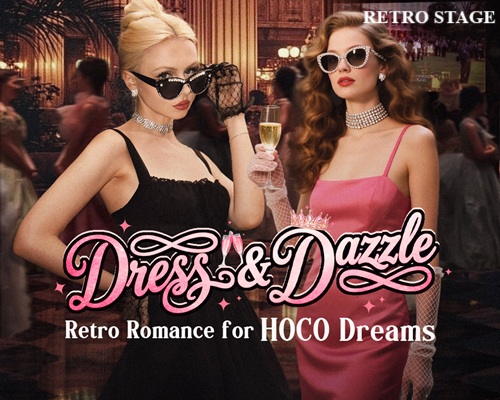
Royal Influence: Edwardian Flourish
No era saw cufflinks sparkle quite like the reign of Edward VII, known during his youth as the Prince of Wales. Edward adored flamboyant fashion, and his cufflinks reflected that taste. His Fabergé cufflinks glittered with colorful gemstones, a bold departure from the plain silver and gold of earlier decades.
His choices trickled down quickly. Aristocrats followed, then the middle classes. Jewelers across Europe began experimenting with color—enamel, semi-precious stones, and intricate patterns.
Germany’s jewelry hubs flourished:
-
Pforzheim: crafting fine, precious-metal cufflinks for the wealthy.
-
Idar-Oberstein: producing affordable but stylish mass-market versions.
This was the moment when cufflinks shifted from purely practical to truly fashionable—a mark of personality as much as wealth.
The Early 20th Century: Art Deco Glamour
The 1900s through the 1930s marked the golden age of cufflinks. Every man, from bankers to grooms, owned at least one pair. They weren’t just fasteners; they were gifts for milestones, heirlooms passed down through families, and markers of adulthood.
The Art Deco movement added boldness to cufflink design. Sleek geometric shapes, sharp lines, and contrasting colors reflected the optimism of modernity. Imagine a 1920s groom slipping on enamel cufflinks before heading to a jazz-filled wedding reception—this was fashion meeting celebration, utility merging with glamour.
War, Recovery, and Hollywood Cool
The Second World War disrupted luxury industries. But once peace returned, so did style. Men embraced cufflinks along with tie bars, cigarette cases, and wristwatches.
The 1950s and 60s brought cufflinks into the spotlight once more, thanks in part to Hollywood. Cary Grant and Frank Sinatra wore them on screen, while Sean Connery’s James Bond made cufflinks synonymous with suave masculinity. To fasten cufflinks was to channel confidence—the kind that could win poker hands and charm crowds.
The Casual Revolution: The 1970s Decline
Then came the 1970s. Bell-bottoms, free-flowing fabrics, and countercultural attitudes rejected formality. The starched shirt gave way to the casual button cuff. Woodstock’s ethos of rebellion made cufflinks seem like relics of an old guard.
For a time, cufflinks retreated to weddings, black-tie affairs, and the occasional boardroom. They weren’t gone—but their everyday prominence had faded.
The Comeback Kid: 1980s Power Dressing
Just when cufflinks seemed destined for obscurity, the 1980s resurrected them. The age of power suits demanded accessories that signaled success. Bankers, lawyers, and executives slipped cufflinks into their French cuffs as armor for the corporate battlefield. Bold designs—gold tones, chunky shapes—reflected the decade’s appetite for excess.
From then on, cufflinks remained a staple of formalwear. The 1990s softened fashion, but cufflinks never disappeared. Instead, they evolved, waiting patiently for modern men to rediscover their charm.
Cufflinks Today: Tradition Meets Personality
In the 21st century, cufflinks are less about uniformity and more about expression. They no longer belong solely to aristocrats or executives—they’ve become an accessory for anyone who wants to add a touch of personality to their look. Whether subtle and classic or bold and playful, cufflinks are now as varied as the men who wear them.
Some of the most popular styles include:
-
Classic bullet-back designs: The most versatile and widely used, featuring a simple rotating mechanism. Perfect for daily business attire or formal events.
-
Chain-link styles: A nod to tradition, offering double-sided decoration connected by a chain, creating an elegant movement at the cuff.
-
Silk knots: Playful, colorful, and inexpensive. First introduced by Parisian shirtmaker Charvet in 1904, they remain a favorite for adding a splash of color without formality. Today, many are made with elastic cores for durability.
-
Novelty cufflinks: These have exploded in popularity. From miniature functional compasses and USB drives to superhero emblems, football club logos, initials, or even quirky shapes like dice and guitars, novelty cufflinks let men showcase hobbies, humor, or affiliations in a subtle but stylish way.
-
Luxury designer cufflinks: Brands like Cartier, Montblanc, and Tiffany & Co. continue to produce finely crafted pieces in gold, platinum, and onyx—modern heirlooms meant to last generations.
Cufflinks today serve two main purposes:
-
Formality: They remain essential for black-tie events, weddings, and galas. A pair of sleek cufflinks instantly transforms a shirt into a statement of refinement. Many grooms still receive cufflinks as symbolic gifts, often engraved with initials or wedding dates.
-
Personality: In an age of individuality, cufflinks are one of the few acceptable ways for men to express character while staying within formal dress codes. A banker might choose classic silver, while a tech entrepreneur could wear 3D-printed cufflinks shaped like circuit boards.
Modern icons still embrace them. Barack Obama has worn cufflinks engraved with the presidential seal, projecting quiet authority. David Beckham often pairs sleek cufflinks with tailored suits, proving they’re as relevant in sports-driven celebrity culture as they are in politics. On Wall Street, they remain a subtle shorthand for confidence and power, while in creative industries, novelty cufflinks are used to spark conversation and reflect individuality.
Interestingly, the digital age has also influenced cufflink design. Bespoke online retailers now allow customers to design custom cufflinks with initials, logos, or even photographs, making them deeply personal keepsakes. There are also eco-conscious cufflinks crafted from recycled wood, upcycled metals, or even reclaimed leather, appealing to the modern man who values sustainability as much as style.
Even in a world dominated by athleisure, business casual, and minimalist wardrobes, cufflinks endure—and not by accident. They remain one of the few accessories that blend function, tradition, and personal meaning in equal measure.
-
A nod to tradition: Wearing cufflinks connects men to a lineage of style stretching back to kings, aristocrats, and icons of the past. Fastening them is like tipping your hat to history.
-
A mark of elegance: No other accessory transforms a shirt quite the same way. A crisp white shirt with button cuffs looks professional, but add cufflinks, and it instantly carries an air of refinement—whether you’re at a wedding, gala, or boardroom presentation.
-
A personal signature: In a world where many men wear similar suits, ties, and shoes, cufflinks are a quiet space for individuality. From engraved initials to quirky designs, they serve as conversation starters and subtle markers of personality.
-
A legacy piece: Unlike ties or shoes, cufflinks often last a lifetime. They’re passed down from fathers to sons, gifted at milestones like graduations, promotions, or weddings, and cherished as keepsakes that carry stories with them.
More than just fashion, cufflinks also represent a different pace of living—one that values detail, ritual, and care. Choosing to wear them is almost a form of resistance against the disposable, fast-fashion culture. In a sense, fastening a cufflink is an act of quiet defiance: a choice to celebrate tradition, craftsmanship, and individuality in a world that often prioritizes convenience over elegance.
And perhaps that’s why they’ve never disappeared. While styles have evolved, cufflinks continue to endure because they aren’t just about fastening fabric—they’re about fastening identity.
The History of the Cufflink is on Your Sleeve
Cufflinks are more than fasteners—they are storytellers in miniature. From the jeweled courts of Charles II to the bold flair of Edward VII, from Hollywood glamour to Wall Street power, they have adapted with each era while never losing their essence.
Slip on a pair, and you’re not just completing an outfit—you’re stepping into a legacy. Whether it’s sleek silver for elegance, colorful enamel for flair, or novelty designs for personality, cufflinks remind us that true style lives in the details. With each fastening, you aren’t just holding a cuff together. You’re wearing history on your sleeve.
